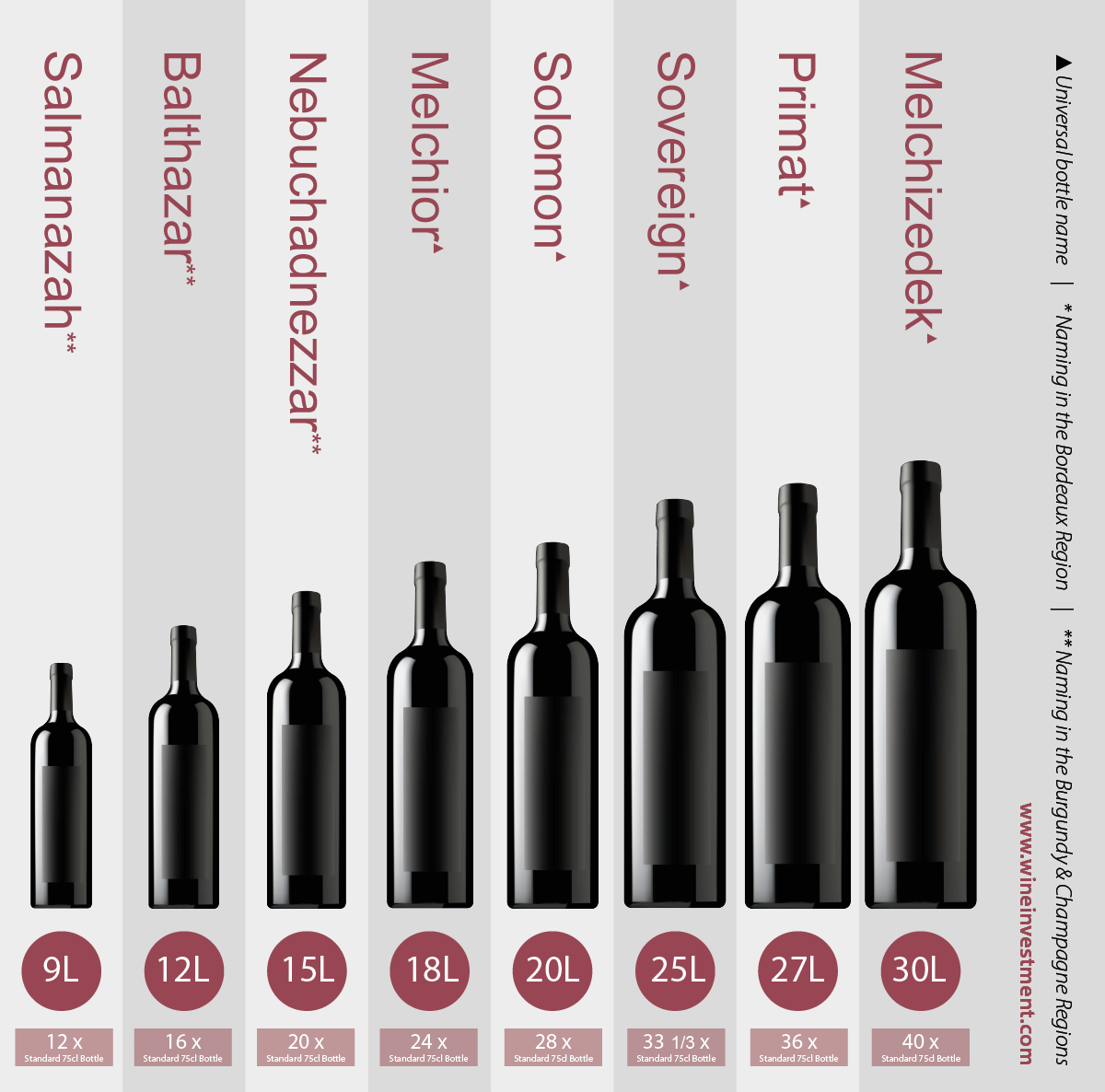
The shelves in your local bottle shop are likely full of the traditional 0.75l offerings most people have come to associate with wine, but beyond supermarket shelves exists a staggering array of wine bottle formats, from the tiny 0.1875l Piccolo, mainly used for Champagne, to the enormous Melchizedek, which holds the equivalent of 40 standard bottles.
Why do different bottle sizes exist?
It might surprise you to learn that bigger bottles are actually about quality, rather than quantity. The main change in size came about during the 1700s, when makers discovered cork could be used as a sealing agent, allowing wines to age. They soon found that larger bottles not only looked better, but they allowed the wine to age and develop over longer periods.
We know today that this is due to the smaller amount of oxygen and sulphur dioxide between the cork and the wine. This surface to air ratio is known as the ‘ullage’, and wines with a lower ullage – typically those in larger format wine bottles – age more slowly, even developing more complexity than the same wine in a smaller bottle.
Why are large format wine bottles named after Biblical characters?
The earliest recorded use of Biblical names for big bottles comes from 1725, where winemakers in Bordeaux were using the name Jeroboam for the four-bottle size we know today. Jeroboam, a Biblical founder in Israel, was referred to as “a man of great worth”, which might explain why he became the namesake for these more valuable bottles.
Alas, no-one knows for sure exactly why larger wine bottles have since been given a string of Biblical names, especially since there doesn’t appear to be any chronological pattern to their naming. That said, one popular theory goes that a Champenois poet of the Middle Ages, Eugene Destuche, mentioned several of these Biblical names in his poetry, and after the Champenois adopted the Jeroboam, simply continued the practice of choosing Biblical figures to name the larger format bottles developed in the 1940s.
Jeroboam: ‘First King of the Kingdom’
Rehoboam: ‘First King of Separate Judea’
Methuselah: ‘Oldest Man’
Salmanazar: ‘Assyrian King’
Balthazar: ‘One of Three Wise Men’
Nebuchadnezzar: ‘King of Babylon’
Solomon: ‘King of Israel, Son of David’
Melchizedek: ‘King of Salem’
Just as large bottle formats differ wildly, so do smaller bottle formats, although this is usually dependant on region. For example, in France the ‘Chopine’ is commonly used for 250ml, while the ‘Clavelin half’, which holds 310ml, is popular in the Jura region of France. The ‘Jennie’, meanwhile, holds 500ml and is used most often for sweet dessert wines from Tokaji and Sauternes.
Why are wine bottles shaped differently?
It’s not just size that matters, but shape, too. When wine was first produced every bottle was manufactured individually by glass blowers, so there was no uniformity. Nowadays, producing hundreds and thousands of identical wine bottles is straightforward, but there are still some discrepancies between regions.
The three most widely-used bottles are: the Bordeaux bottle, with tall shoulders, a deep punt and straight sides; the Burgundy bottle, which is wider than the Bordeaux and features more deeply-sloping shoulders; and wine bottles from Germany and Alsace, which prominently feature long, graceful necks.
Of course, there is variance within these regions, too. Chateau Haut Brion in Bordeaux, for example, has its own unique bottle with sloping shoulders, while Magrez Frombauge in St Emilion bottles its wine in taller bottles with longer necks.
These styles are generally based on tradition, fashion and marketing, though, and make little difference to the aging potential of the wine – although, naturally, odd-shaped bottles make for more challenging storage!
